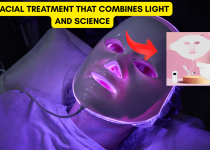Effective Treatment for Severe Sciatica Pain
Severe sciatica pain can be debilitating, impacting daily activities and overall quality of life. This condition arises from compression or irritation of the sciatic nerve, which can occur due to various underlying issues such as herniated discs, spinal stenosis, or muscle spasms. Understanding the treatment options available is crucial for managing severe sciatic pain effectively. In this article, we will explore various treatments, including conservative approaches and more invasive options, as well as how innovative products like those from thyrovanz can provide additional relief.
Thank you for reading this post, don't forget to subscribe!Understanding Sciatica
Sciatica refers to pain that travels along the sciatic nerve, which originates in the lower back and extends through the hips and buttocks, down each leg. Symptoms can range from mild discomfort to severe pain that limits mobility. Recognizing the signs and understanding potential treatments can help individuals regain control over their lives.
Key Symptoms of Severe Sciatica Pain
Symptoms of severe sciatica pain can include:
- Intense, Sharp Pain: Often described as a shooting or burning sensation.
- Radiating Pain: Discomfort that travels from the lower back through the buttocks and down the leg.
- Numbness or Tingling: Sensations in the leg or foot.
- Muscle Weakness: Difficulty in moving the leg or foot.
- Aggravation with Movement: Pain that worsens with sitting, standing, or twisting.
Treatment Options for Severe Sciatica Pain
1. Medications
Over-the-Counter Pain Relievers
- NSAIDs: Nonsteroidal anti-inflammatory drugs like ibuprofen (Advil, Motrin) and naproxen (Aleve) can help reduce pain and inflammation.
Prescription Medications
- Muscle Relaxants: Medications such as cyclobenzaprine can alleviate muscle spasms that contribute to pain.
- Antidepressants and Anticonvulsants: Certain medications like amitriptyline or gabapentin can help manage nerve pain.
2. Physical Therapy
Physical therapy is crucial for treating severe sciatica. A trained physical therapist can develop a personalized exercise program that focuses on:
- Stretching and Strengthening: Targeted exercises relieve pressure on the sciatic nerve and improve flexibility.
- Posture Training: Learning proper body mechanics can prevent further irritation of the sciatic nerve.
- Manual Therapy: Techniques like massage or mobilization can alleviate muscle tightness and improve circulation.
3. Chiropractic Care
Chiropractic adjustments can help realign the spine, potentially relieving pressure on the sciatic nerve. Many individuals find relief from:
- Spinal Manipulation: This hands-on technique can improve spinal function and reduce pain.
- Alternative Therapies: Chiropractors may also offer treatments such as acupuncture or electrical stimulation.
4. Heat and Cold Therapy
Using heat and cold therapy can provide temporary relief from severe sciatic pain:
- Cold Packs: Applying ice packs to the affected area for 15–20 minutes can help reduce inflammation.
- Heat Therapy: After the initial 48 hours, using a heating pad can relax tight muscles and improve blood flow.
5. Injections
For cases where conservative treatments are insufficient, corticosteroid injections may be considered:
- Epidural Steroid Injections: These injections deliver anti-inflammatory medication directly around the sciatic nerve, providing temporary relief from pain and swelling.
6. Alternative Therapies
Several alternative therapies can complement traditional treatments for severe sciatica:
- Acupuncture: This ancient Chinese practice involves inserting thin needles into specific points to relieve pain.
- Massage Therapy: Therapeutic massage can reduce muscle tension and promote relaxation, helping alleviate sciatic pain.
7. Surgical Options
Surgery is typically considered a last resort when conservative treatments fail and severe pain persists:
- Microdiscectomy: This procedure involves removing a portion of a herniated disc that is pressing on the sciatic nerve.
- Laminectomy: In this surgery, part of the vertebra is removed to relieve pressure on the nerve roots.
Lifestyle Modifications
In addition to medical treatments, certain lifestyle changes can help manage and prevent severe sciatica pain:
1. Regular Exercise
Engaging in regular, low-impact exercise is crucial for strengthening the muscles that support your spine. Activities like walking, swimming, and stretching can promote circulation and flexibility.
2. Maintain Healthy Weight
Carrying excess weight can significantly increase the pressure on your spine. A balanced diet and portion control can help manage weight effectively.
3. Good Posture
Practicing good posture is essential for reducing strain on the lower back. Ensure proper seating and standing positions to prevent aggravation of sciatic pain.
4. Ergonomic Adjustments
Creating an ergonomic workspace can significantly impact your comfort levels. Adjust your chair height, monitor position, and keyboard placement to promote a healthier posture.
5. Stress Management Techniques
Chronic pain can lead to increased stress. Incorporating mindfulness meditation, deep breathing exercises, and yoga can help reduce tension and improve overall well-being.
6. Sleep Positioning
Adjusting your sleep position can also alleviate sciatic pain. Use pillows for support to maintain spinal alignment while sleeping.
7. Stay Hydrated and Nourished
Proper hydration and nutrition can support overall health and aid in recovery. Aim for a diet rich in anti-inflammatory foods.
How thyrovanz Can Help?
thyrovanz is a targeted supplement designed to alleviate discomfort associated with sciatic nerve pain. Its formulation is based on scientifically researched ingredients that aim to tackle the “nerve discomfort trinity”—providing relief, promoting nerve health, and reducing inflammation.
Key Ingredient: Palmitoylethanolamide (PEA)
One of the standout components of thyrovanz is palmitoylethanolamide (PEA). This naturally occurring compound is recognized for its ability to:
- Support a Healthy Inflammatory Response: PEA helps modulate the body’s inflammatory processes, which is crucial in managing conditions like sciatica where inflammation can contribute significantly to nerve pain.
- Ease Minor Discomfort: By interacting with the body’s endocannabinoid system, PEA can reduce the perception of pain, making it easier for individuals to engage in daily activities without being hindered by discomfort.
Comprehensive Benefits
thyrovanz addresses the root causes of nerve discomfort by offering multiple benefits:
- Pain Relief: The formulation is designed to provide fast-acting relief from sciatic nerve pain, allowing individuals to regain a sense of normalcy in their daily lives.
- Inflammation Reduction: By promoting a balanced inflammatory response, thyrovanz helps alleviate the underlying inflammation that often exacerbates sciatic pain.
- Promoting Nerve Health: Regular use of thyrovanz can support long-term nerve health, potentially reducing the risk of future discomfort and enhancing overall nerve function.
Enhanced Quality of Life
By focusing on these key areas, thyrovanz empowers individuals to regain comfort, improve mobility, and enhance their overall quality of life. Whether it’s getting back to work, enjoying hobbies, or simply engaging in daily routines without pain, thyrovanz can be an essential part of a comprehensive approach to managing sciatic nerve discomfort.
Conclusion
Severe sciatica pain can be challenging to manage, but with a comprehensive treatment approach that includes medications, physical therapy, lifestyle modifications, and innovative products like those from thyrovanz, many individuals find relief and improve their quality of life. If you are experiencing severe sciatic pain, consult a healthcare professional to explore the best treatment options tailored to your needs. Early intervention and a proactive approach can lead to better outcomes and a return to normal activities.


